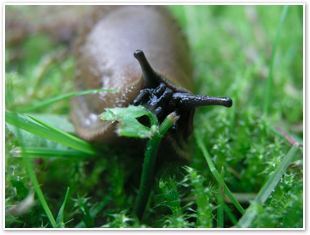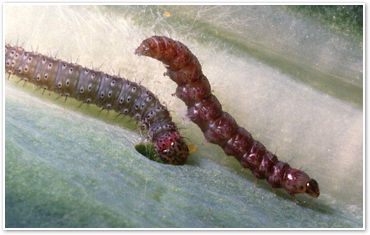
Pests:
Tomatoes are subject for attack by many pests. Most commonly, when a pest affects the tomato plant, it goes for the leaves and the fruits. On occasion, there are some pests that find their way to the roots and affect the whole plant. Some of the common pests which live and affect tomatoes in the United States are listed below 7
stems of tomato plants, working on defoliating them (removing the leaves). It is closely related to the tomato hornworm which also eats at tomatoes, but is far less common in the United States. Both of these hornworms feed specifically on the solanaceous plants. The large size of these caterpillars allow them to strip the plant in a rather quick time, which surprises many of gardeners. The horn, which is on the posterior side of the organism, is believed to be a defense mechanism. While at the anterior end, the hornworm is busy working. The color of the hornworm also helps it survive, considering at a quick glance, gardener’s have no idea they are there!
Protection from hornworms:

Tobacco Hornworm
Tobacco Hornworm (Manduca quinquemaculata)
The tobacco horn worm is very much like a caterpillar that feeds on tomatoes. It is found crawling on the
In order to protect your hands from the horn (which looks like a stinger), make sure your hands a gloved. Once you pick them off the plant, you can drown them in soapy water, or use common pesticides such as neem oil, stomach poison insecticide, or Bacillus thuringiensis.
Slugs (from the mollusk family)
Slugs play and important role in the environment because of their tendency to eat dead leaves, fungi, and decaying vegetable material. But when they start feeding of living plants, such as the tomato plant is when many gardeners get fed up. Slugs tend to leave slime where they have been and eat the tomato plant leaves. The slime left behind is basically a trail in which other slugs will recognize and follow. Due to this, when you have one slug in your garden, you better get rid of it quick, because typically it means many are to come! In a garden, slugs are also destructive to cabbage, lettuce, turnips, and carrots.

Protection from slugs:
In order to keep a garden safe from slugs, pesticides bought from a local store will do the trick. But if you want to save a few dollars, by placing a tin of beer in your garden, the slugs will be attracted and then drown. Just make sure the tin is short and shallow to allow for the slug to enter!
Arion lusitanicus
Cutworms (Lepidoptera Noctuidae)
The word “cutworm” is loose terminology for the larvae of moths. They are notorious for being garden pests. They tend to feed on tomato, cabbage, and pepper plants. They are one of the worst type of pest for a gardener to encounter. Unlike other organisms, the cutworm destroys the entire plant. They can feed on the roots, the stem, the leaves, and the fruiting body. Usually, the cutworm goes straight for the lower stem and cuts off the plant. Cutworms are usually green, brown or yellow, and look closely like the caterpillar. The coloring is a great defense mechanism for the organism. Learn more about the cutworm at the University of Rhode Islands web page.
Protection from cutworms:
Pesticides can be used to remove the cutworm from the garden, but for those who prefer to have a chemical free garden, there are other options. The mostly used prevention system is placing a cutworm ring around the base of the plant. This can be a paper collar that goes an inch or longer above and below ground level. You can also wrap the lower portion of the stem with aluminum foil, colored paper, or plastic, which prevents the cutworm from wrapping its body around the base of the stem.

There is a lot about tomatoes that many people don’t know. For example, the controversial topic of a tomato being a fruit or a tomato was taken all the way to the Supreme Court! Interested? Check it out at the bottom of the interesting facts page!
Site designed by Chloe Scheel, Last updated April 2009.
